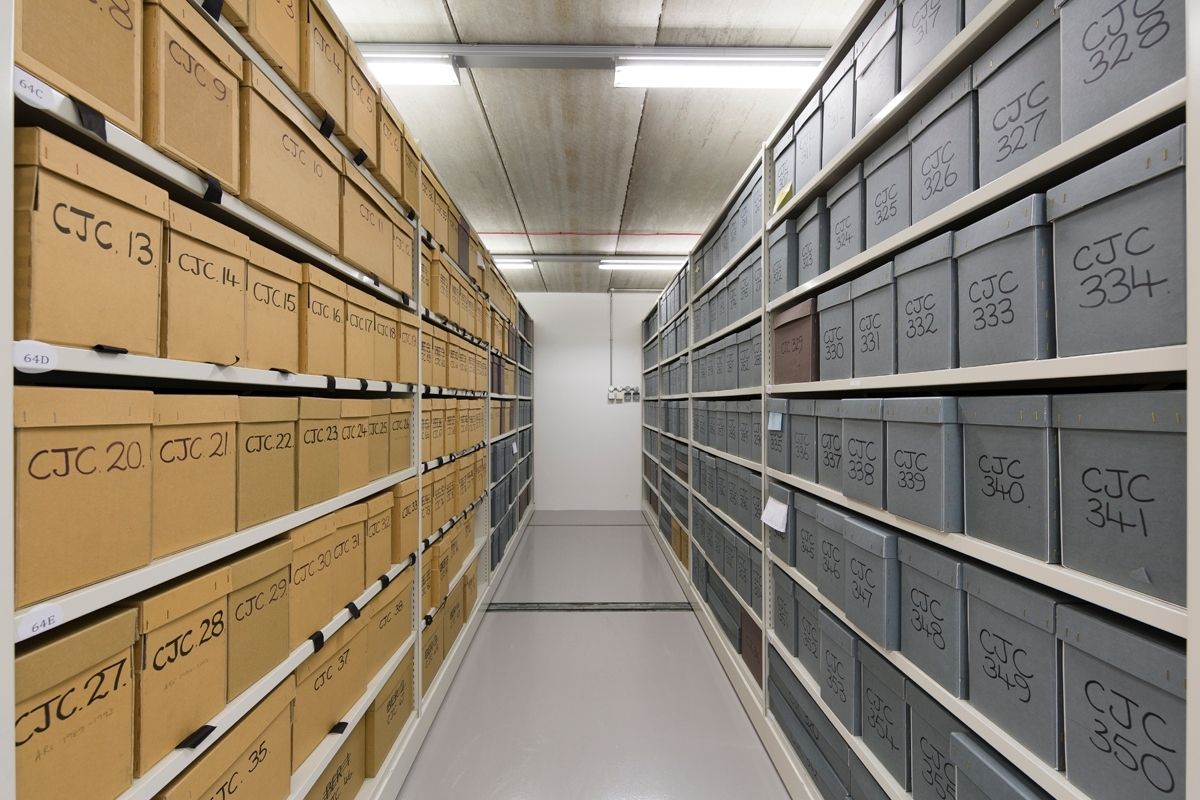Business History
Business History
The Shoemakers Museum’s archive documents the 200-year history of the Clarks shoe company, its subsidiaries, and business acquisitions in the UK and globally. It offers an invaluable insight into international footwear manufacturing, marketing and retail.
Advertising
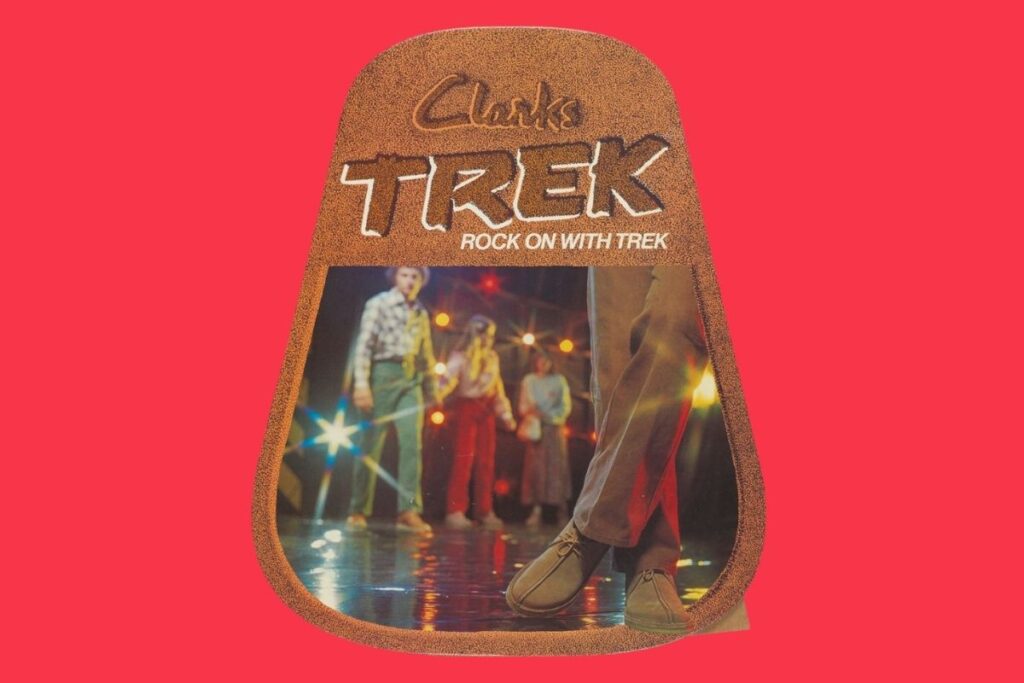
The Point of Sale collection reflects trends in marketing, popular culture, fashion and influence from the 1840s to the present day. The collection features notable fashion and retail illustrators of the century; Syd Brak, J.F. Demachy, Rene Gruau, Mela Koehler, Edward McKnight Kauffer, Alistair Michie, E.H. New and Aubrey Rix. Advertising agencies used in the post war period. Photographic collaborations between C. & J. Clark and Cecil Notley/John Steele (John Hinde, Bebe Daniel in the 1940s) Grey Advertising (Hardy Amies, David Bailey, Jean Shrimpton in the 1960s), Collett Dickenson and Pearce (Herb Ritts, Yasmin Le Bon in the 1980s) and Boase Massimi Pollitt (Helmut Newton in the 1980s).
Company Publications
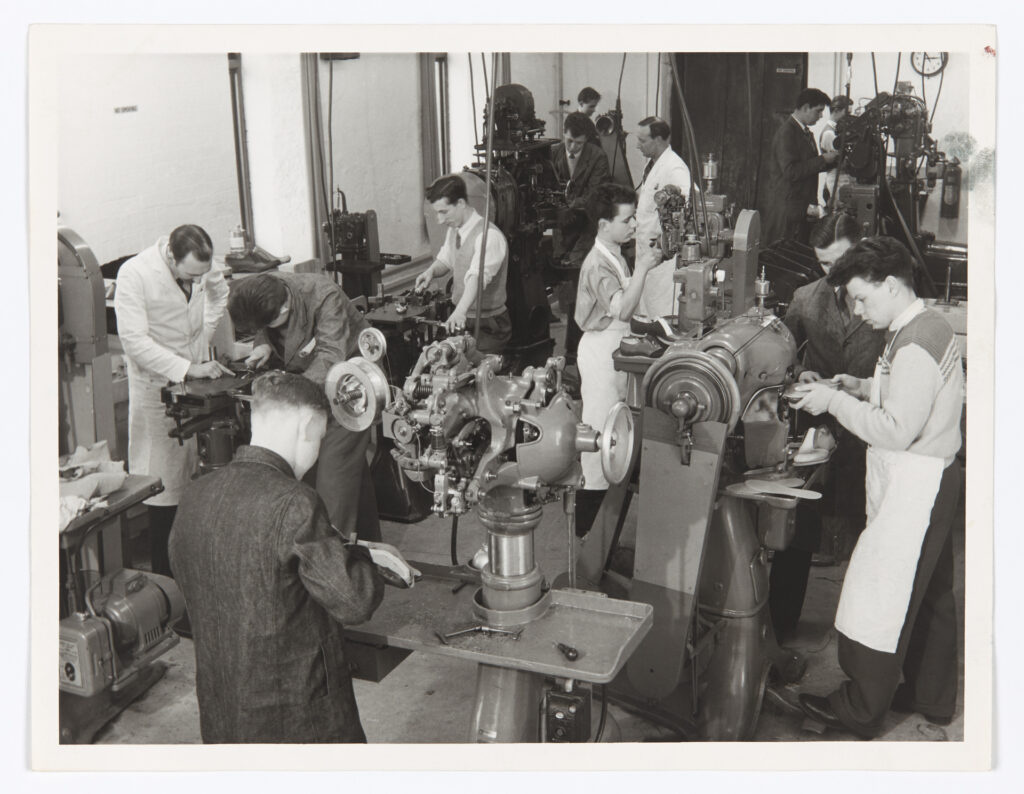
Company publications are represented by Clarks Newsheet, Clarks Comments and the Clarks Courier/International from 1924 to 1996. Photographs that feature in the Courier exist as a separate collection, alongside envelopes of press cuttings and notes used to prepare the publications. Internal company communications include Eyelet, a factory newspaper for “K” Shoes that ran from the 1920’s to 1970s.
The publications aimed to create a common identity, to foster an inclusivity that benefited worker welfare, something reflected in the contents, which focuses on factories, their products, the people that populated them, and the communities they created.
Footwear Catalogues
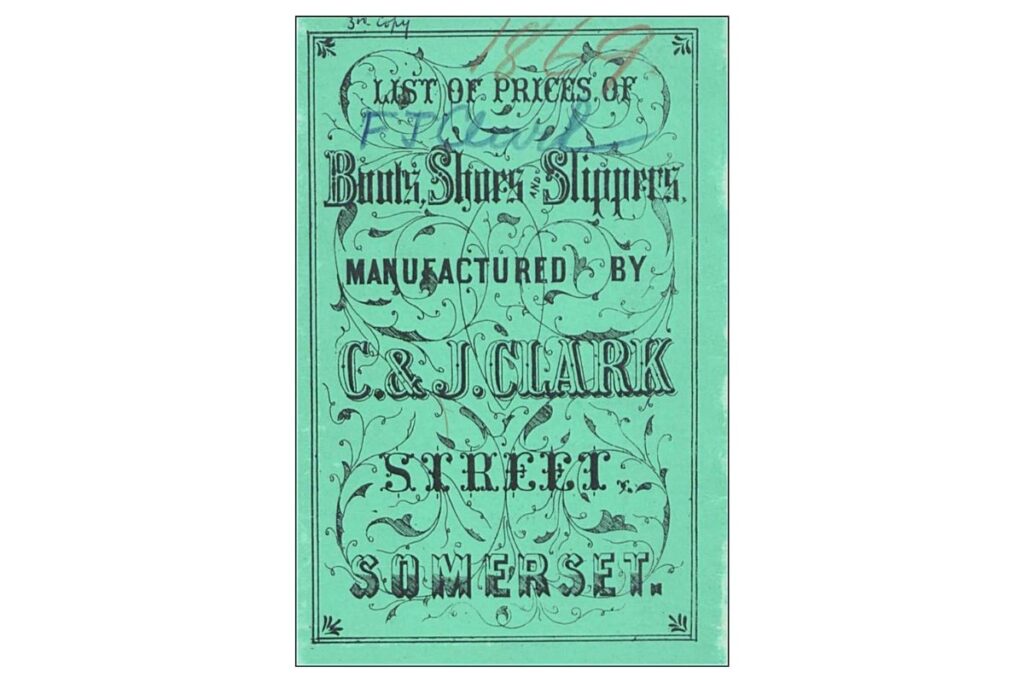
Footwear catalogues for C.&J. Clark date from 1848 with subsidiary company catalogues also well represented; Bostonian, Clarks Overseas Shoes, Hanover, Levis’ for Feet, “K” Shoes, Padmore & Barnes and Tor Shoe Supplies. These feature chronological, technical, product and range specifications, with accompanying colour, material, price and size details. Supporting information on sales relates to agents, travellers and individual markets, both UK and overseas. Sales strategies are well documented, formulated to engage specific consumers or markets, to target price points, and selling campaigns. Footwear featured in sales catalogues can be used retrospectively to identify key fashions, historical details, trace distinct brand lines, constructions, functions or style references.
C & J Clark business archive
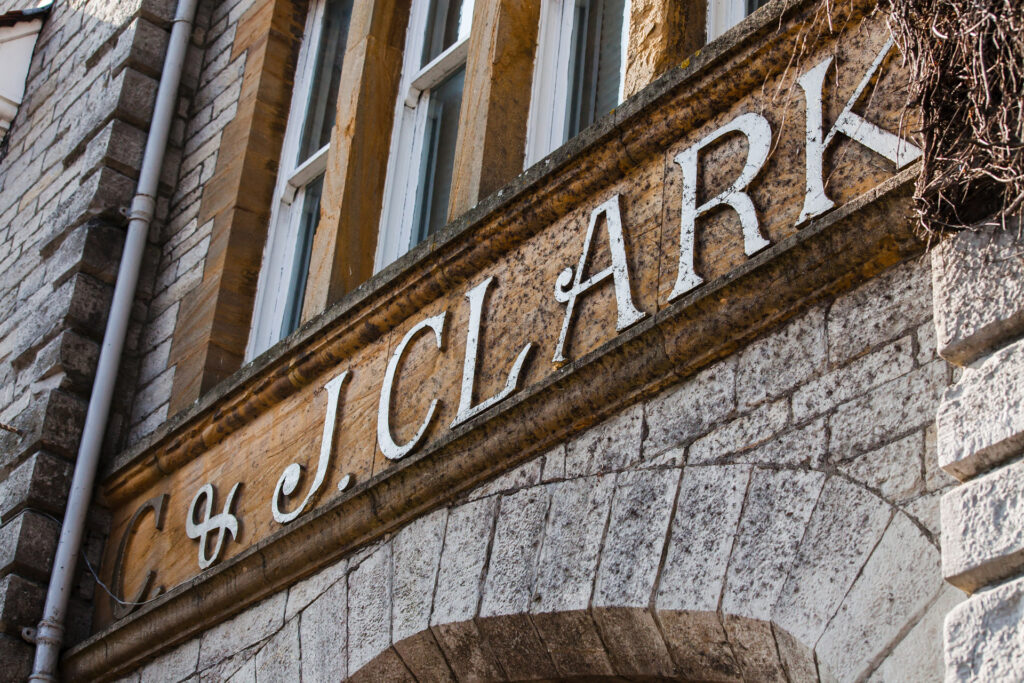
Archives document the evolution of a Quaker family business from sheepskin rugs to footwear, outwork to factory production, partnership to private limited company, and domestic sales to international markets. Collections were created by family members (Bancroft Clark, Daniel Clark, John Bright Clark, John Clothier, Peter Clothier), the offices they occupied (No.1 Office, No.2 Office) and the papers of professional managers (John Frith, Bill Graves, Leslie Graves) that ran the finance, manufacturing and marketing aspects of the business through postwar expansion. Broader company collections (C. & J. Clark and Clarks) indicate the growing importance of selling and retail, as Clarks move from being a wholesaler and manufacturer of shoes, to become a wholesaler and retailer after the 1980s.
C & J Clark subsidiaries
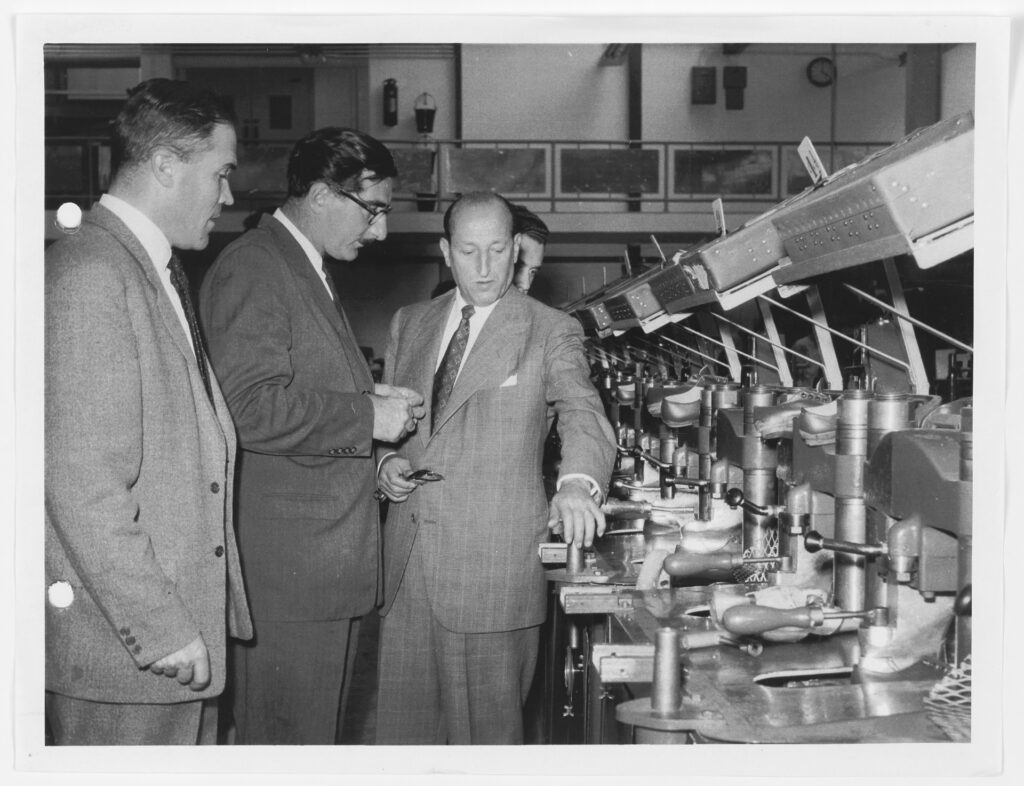
Clark’s subsidiaries were created to develop and innovate technologies in shoemaking and ensure self-sufficiency. The development of shoemaking out of sheepskin rugmaking is an example of diversification. The rug business continued as Clark, Son & Morland from 1870. An initiative to manufacture leatherboard from waste generated in shoemaking also resulted in Avalon Leatherboard. Efforts to obtain an expertise in adhesives, componentry, machinery and materials likewise prompted the creation of Avalon Industries.
C & J Clark Acquisitions
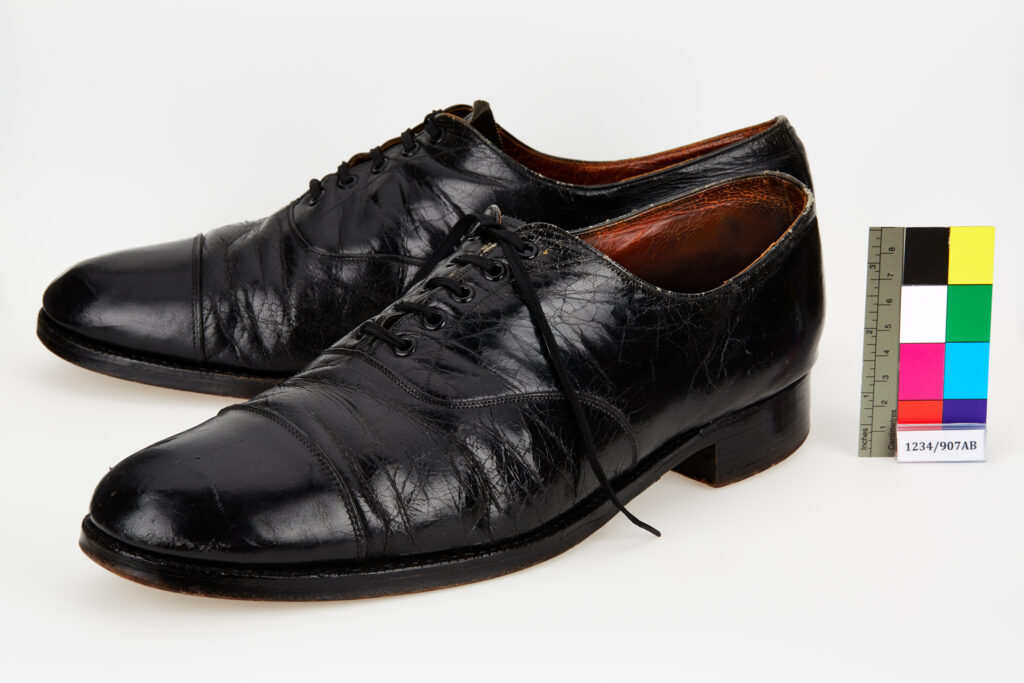
Introduction of import tariffs in Ireland was Clarks initial reason for acquiring manufacturing interests (AH, IRE, COS). The collections include reference to further purchases in Australia, Canada, Germany, New Zealand, Portugal and South Africa. UK manufacturing acquisitions enabled access to expertise Clarks lacked (A&F Shoes, J.T. Butlin, London Lane, Stedfast – AH, JWGF) access to trades and sectors where Clarks had little or no presence (Chassures Ravel/Mondaine, Europolymers, France Arno, La SAG, Ralphs Unified, Rohan, Supasports), or resulted from consolidation within the footwear industry. Competitive pressure drove early retail acquisitions (Abbotts, Bayne & Duckett, Craddocks, Densons, Jackmans, John Farmer, Massinghams, Peter Yapp) and prompted the purchase of “K” Shoes.
